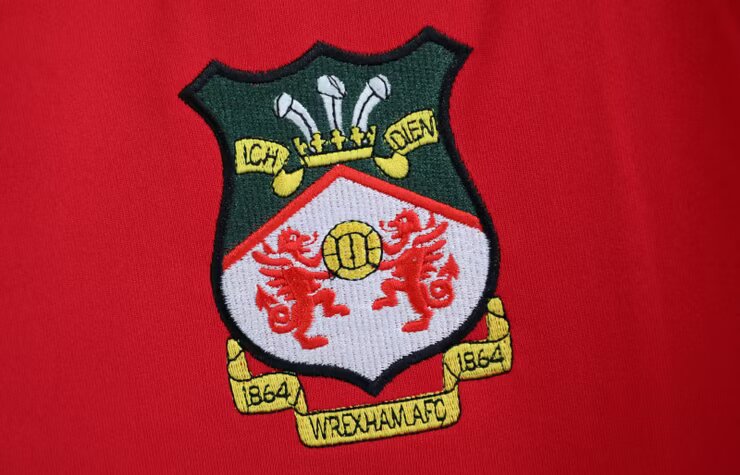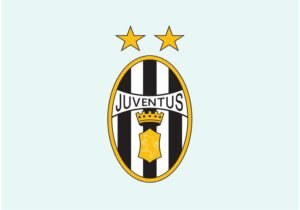
For the first time in 16 years, Wrexham co-owners Rob McElhenney and Ryan Reynolds set up a makeshift stand in the Kop end of the stadium, drawing more than 12,000 spectators.
For the first time in sixteen years, persons capable of inhaling oxygen are standing in Wrexham’s Kop end, which has many clear practical benefits.
When a player scores a goal, for example, they are no longer forced to perform that awkward little dance while deliberating which of the three sides of the Stok Racecourse Ground to celebrate their victory in front of.
Or, in terms of photos, since did you really attend a Wrexham game if you didn’t take a panoramic and tag Rob or Ryan in it?–The oldest international grounds still in use in the world is no longer being stolen by a dozing bulldozer that was robbing its rheumatic charm.
There’s also merit to the urban tale concerning footballs, crowd breathing, and home stadiums. This is a common sense principle that typically encounters a roadblock in the form of simple physics, but it has never had to take into account hurricane force winds or, dare we say it, fate.
A Wrexham goal was enjoyed in front of the Kop, whether it was due to Saturday’s supernatural wind power or the cooperation of 2,000 more people willing the ball into the net. a first in sixteen years. Because anything less would not have been permitted by the great gods of tale.
Goal scorer James Jones, who pounced on a loose ball after Ben Tozer’s long throw and swept past Nick Townsend of Newport to break a grittier and, for extended periods, nasty deadlock, recalls, “You could feel it coming.” “The new stand, the wind.” The mood was intensifying; something needed to happen, and everything was pulling in the same direction.
The joy in the obvious cliché was in the fact that Jones, scoring on his 100th league appearance for Wrexham, knew just when to celebrate as the Kop stand erupted in joy and threatened to collapse. The 27-year-old raised his arms in the air and waltzed slightly to the left, spreading the word.
Actually, the word is a warning. Wrexham has scored goals in 49 straight home league games, shattering a record that existed for 120 years. Three minutes before the end of regulation, Elliot Lee’s goal made sure Wrexham won another league game at home with two or more goals.
Along with fifth-place Crew, Phil Parkinson’s team had the greatest points-per-game return at home in League Two going into Saturday. Following Crew’s loss to Barrow on Friday evening, Wrexham—now in third place and tied for third with Barrow—stand apart.

Modern football is full of unthinking claims to strongholds. But for a team that has already traveled to play four of the other six teams in the league this season (the closest any other club has come is two), Wrexham’s unyielding performance at home this year is not only a notion that threatens to become its own law of nature amid a realistic promotion push—it’s also one that is currently enjoying the benefit of a newly reinstated Kop end, a bearpit with two sides once again.
Neil Roberts, the man who scored the winning goal in front of supporters in the Kop end during the 2008 relegation season, states, “It’s not the same playing in a three-sided ground, it’s not.” “There are numerous turns and twists.”
It felt appropriate and deliberate that Wrexham’s first League Two matchup with Newport coincided with the club’s return to an attendance of over 12,000 for the first time in over a decade. There were numerous intricate undertones supporting the game on Saturday. Both teams are familiar with adversity, the hold of existential dread, the decay that may result from poor management, and the unbridled power of a united fan base.
They are also aware of the odyssey of escaping football banishment, which is akin to hell. The only way Newport was able to return to the football league ten years ago was by defeating Wrexham, who had been demoted, 2-0 in the Conference Premier play-off final at Wembley Stadium. This victory put an end to Newport’s 25-year existence outside the footballing promised land following liquidation.
The debate will rage on regarding just how acrimonious this 125-mile rivalry really is. Does consigning your northern compatriots to 10 more years of purgatory constitute burning hatred? Is now the time to give legs to the conspiracy theory that if Newport had lost at Wembley they’d be the ones counting Ant Man and Buddy the Elf among their more ardent fans?
Is all of this just the media’s concerted effort to capitalise on the buxomous Wrexham narrative? How real is this? (A timely reminder: Ryan Reynolds and Rob McElhenney fell in love with Wrexham coming up on three years ago now. What even is real?)
Locked inside the din of a four-walled Racecourse Ground for the first time in 16 years, everything about the celebratory cackle after Jones’ strike said there was something fiercely primal about the occasion. Something pent-up, needled, intoxicating. Something visceral coming to life.
For the opening 45 minutes of Saturday’s match, the Kop, though, was hardly alight. Myriad factors were to blame: A low-quality and disjointed first-half display, a more dominant Newport shooting towards the end, the lack of shelter from the (have we mentioned this?) galactic winds.
Newport striker Omar Bogle cut himself a particularly persistent menace. But despite the benefit of the wind on his side, Bogle couldn’t inflict the sort of painful poetry that would have sent the travelling Newport faithful into fits of paroxysms.






